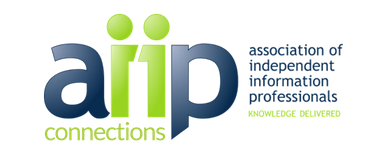We Are AIIP: I’m a KOS Navigation Guide

You describe yourself as a Knowledge Organization System (KOS) navigation guide. Briefly, what does a KOS navigation guide do?
A KOS navigator applies information structure and classification to the data in a database so that clients spend less time looking for information and more time using it.
Can you share an example where KOS navigation comes into play?
Whether in a store, using a computer or searching the internet using your smartphone, the world has been organized and categorized into KOSs.
Let’s say you need spray paint to touch up your outdoor patio furniture. If you know how things are organized at a supercenter, you won’t look for it in the pharmacy department. Instead, you’ll search for it in the home improvement aisle, where you’ll expect it to be located with other items useful for home repair. If the store had put the paint with cough medicine, you might never have found it.
Whatever you need to find, it is helpful to have some familiarity with the underlying classification concepts created and implemented for your benefit. No matter what type of KOS you need to navigate, whether for physical or digital materials, these classifications, or taxonomies, will help or hinder your chances of finding what you need. Broad, top-level terms may get you started, but a taxonomy gives you more specifics.
What makes a taxonomy effective?
A useful taxonomy is a method of arrangement that follows a consistent structure and covers a specific body of knowledge. Good taxonomies are not static; they expand, contract and change to reflect the contents they represent. Taxonomies push past the simple list to organize terms into a hierarchical structure.
Why is that important?
Faster and more accurate information retrieval saves not only time but also frustration and money, too. Recreating and reproducing information that is inaccessible, lost, or misplaced is costly.
KOS tools help users avoid sifting through large amounts of information and help searchers hit their target. KOS navigators demystify taxonomies and reveal the possibilities for linking, visualizing, and analyzing even more of their clients’ data.
What do people need to succeed as a KOS Navigation Guide?
Understanding standards, conventions and guidelines for taxonomies (e.g., ANSI/NISO Z39.19-2005 [R2010]) is helpful. Broad information literacy skills and some linguistics or semantics knowledge help implementors avoid common information retrieval pitfalls.
Eric Ziecker is the principal of LightSource Information & Research Services Limited and has been an AIIP member since 2011. Through consultation and information literacy instruction, LightSource helps clients understand, create, and navigate KOS platforms that utilize uniform principles of information architecture to assist in rapid retrieval and additional pertinent discovery.





